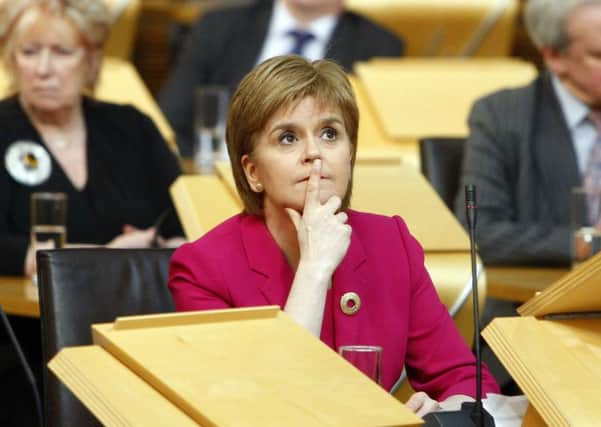Everything you need to know about the fiscal framework


t means MSPs will take on new controls over tax and welfare. But what were the stumbling blocks which led to more than a year of fraught negotiations and saw Nicola Sturgeon and the Scottish Government threaten to walk away - even if it meant losing out on these new powers?
Well, up until this year, the Scottish Parliament has been largely funded by a “block grant” - an annual cheque of about £30 billion direct from the Treasury. That changes this year when the “Calman Commission” powers were enacted, which see MSPs gain some controls over income tax, to add to limited property and environmental taxes.
Advertisement
Hide AdAdvertisement
Hide AdThe referendum campaign saw Scots promised even further new powers, in line with the Vow, if the country voted to remain in the UK. This means Holyrood getting far greater control over raising what it spends itself. This ncludes power over income tax rates and bands, air passenger duty, aggregates levy and an assigned share of VAT.
Along with the council tax, this amounts to about £19 billion. But if Holyrood is to start raising a major chunk of its spending through direct taxation, then the block grant coming directly from the Treasury will naturally have to be reduced. The dispute has been how to do this fairly, in line with the “no detriment” principle at the heart of the Smith Commission which drew up the blueprint for the new powers.
It has been this question which has left the Scottish Government in Edinburgh and Treasury officials in London at odds over the past year. The “no detriment principle” did not mean either Government could escape the impact - positive or negative - if they chose to raise or cut taxes. But it did mean neither Scotland nor the rest of the UK should be worse off financially as a result of the devolution of extra powers if economic performance and tax rates remained the same.
The current population-based “Barnett” formula can be applied in the first year. But this becomes difficult in future years as population rates diverge.
The UK Government backed a “levels adjustment” model which would see the block grant adjusted taking into account Scotland’s population share.
But the SNP Government warned this could see Scotland lose out to the tune of billions of pounds as it has a traditionally slower rate of population growth than the rest of the UK. In the end a compromise was reached which was based on the Treasury adjustment model, but with a “no detriment” outcome for the next five years.
It meant the same outcome would be delivered as the per capita index deduction system, and a review will be held in 2021 with no assumed “default” to the transitional system.
